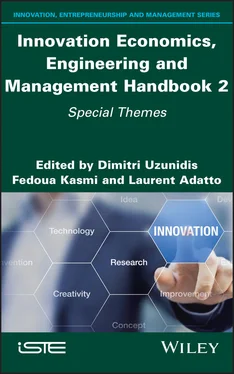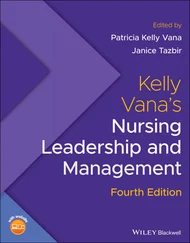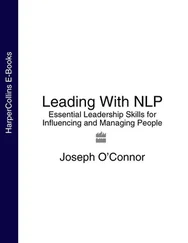– identification of personalities from the engineering world who supported the introduction of IE and ISE to France;
– search in Google Scholar for traces of founding documents linking engineering and innovation for the period 1975–2000;
– search for international associations of scientific and practice communities that were created during the period under review;
– our results are referenced in two tables: the first highlights, in chronological order, the inspirational authors and engineers and the themes of their work (Table 2.1); the second highlights, in chronological order, the authors making progress in the engineering sciences and who are recognized as contributors to the development of research in innovation, whether or not resulting from the development of IE and ISE in France (Table 2.2).
| Themes |
Year |
Inspirational authors’ seminar work |
| Information systems |
1973 |
Le Moigne, J.-L. (1973). Les systèmes d’information dans les organisations . Presses universitaires de France, Paris. |
| Decision systems |
1974 |
Le Moigne, J.-L. (1974). Les systèmes de décision dans les organisations . Presses universitaires de France, Paris. |
| Prospective/systemic-holistic |
1975 |
de Rosnay, J. (1975). Le macroscope : vers une vision globale . Éditions du Seuil, Paris. |
| Systemic-holistic |
1979 |
Mélèse, J. (1979). Approches systémiques des organisations : vers l’entreprise à complexité humaine . Edition Hommes et Techniques, Paris. |
| Technological excellence |
1985 |
Morin, J. (1985). L’excellence technologique , 1st edition. Editions Jean Picollec, Paris. Morin, J. (1988). L’excellence technologique , 2nd edition. Editions Jean Picollec, Paris. |
| Management of technological resources |
1988 |
Morin, J., Seurat, R., Marbach, C. (1989). Le management des ressources technologiques . Editions d’Organisation, Paris. |
| Systemic-holistic |
1990 |
Le Moigne, J.-L. (1990a). La modélisation des systèmes complexes . Dunod, Paris. |
| Systemic-holistic |
1994 |
Le Moigne, J.-L. (1990b). La théorie du système général : théorie de la modélisation . Presses universitaires de France. |
As we have already pointed out, the 1970s clearly appear to be the beginning of a new way of thinking, designing and acting on technological systems. It was during this period that two key notions appeared, which were prospective and systemic through founding works: the macroscope (de Rosnay 1975), information and decision-making systems (Le Moigne 1973, 1974) and the systemic approach to organizations (Mélèse 1979), which was not widely disseminated at the time. It was not until the mid-1980s that this holistic vision appeared in the understanding of industrial systems and organizations, namely, the management of technological resources (Morin 1985; Morin et al . 1989) and the modeling of complex systems (Le Moigne 1990a, 1990b). These works were a necessary condition for the emergence of innovation engineering because they inspired the academic community, which was already aware of the importance of taking a new look at engineering research, in particular by introducing the notion of innovation (Table 2.2).
Finally, it is interesting to note that the emergence of a field of research on innovation was not an isolated phenomenon in France, since we can see the emergence, this time concomitantly, in the United States, England and Japan, in particular, of a discipline with an “integrated” approach to “value development” under very different qualifiers, as shown in Table 2.2.
| Themes |
Year |
Inspirational authors |
| Competitive advantage |
1985 |
Porter, M.E. (1985). Competitive advantage: Creating and sustaining superior performance. Competitive Advantage , 167, 167–206. |
| Innovation and lead users |
1988 |
von Hippel, E. (1988). Sources of Innovation . Oxford University Press, New York. |
| Innovation and learning organizations |
1990 |
Senge, P. (1990). The Fifth Discipline: The Art and Practice of the Learning Organization . Random House, London. |
| Technologica l change |
1994 |
Freeman, C. (1994). The economics of technical change. Cambridge Journal of Economics , 18(5), 463–514. |
| Critical skills |
1994 |
Hamel, G. and Prahalad, C.K. (1996). Competing for the Future . Harvard Business School Press, Boston, MA |
| Critical capabilities and technology strategy |
1995 |
Leonard, D. (1995). Wellsprings of Knowledge . Harvard Business School Press, Boston, MA. |
| Innovation and the learning organization |
1995 |
Nonaka, I. and Takeuchi, H. (1995). The Knowledge-creating Company: How Japanese Companies Create the Dynamics of Innovation . Oxford University Press, Oxford. |
| Disruptive innovation |
1995 |
Bower, J.L. and Christensen, C.M. (1995). Disruptive technologies: Catching the wave. Harvard Business Review , January–February, 43–53. |
| Innovation audit |
1996 |
Chiesa, V., Coughlan, P., Voss, C.A. (1996). Development of a technical innovation audit. Journal of Product Innovation Management: An International Publication of the Product Development & Management Association , 13(2), 105–136. |
| Learning organization |
1996 |
Argyris, C. and Schön, D.A. (1996). Organizational Learning II: Theory, Methods and Practice . Addison-Wesley, Boston, MA. |
| Disruptive innovation |
1997 |
Christensen, C. (1997). The Innovator’s Dilemma: When New Technologies Cause Great Firms to Fail , 1st edition. Harvard Business Review Press, Cambridge, MA. |
| Industrial innovation |
1997 |
Freeman, C. and Soete, L. (1997). The Economics of Industrial Innovation , 3rd edition. Routledge, Abingdon. |
| Technological innovation and change |
1999 |
Mowery, D.C. and Rosenberg, N. (1999). Paths of Innovation: Technological Change in 20th-Century America . Cambridge University Press, Cambrdige. |
| Technology management |
2000 |
Khalil, T.M. and Shankar, R. (2000). Management of Technology: The Key to Competitiveness and Wealth Creation , 1st edition. McGraw-Hill Science, Boston, MA. |
| Open innovation |
2003 |
Chesbrough, H.W. (2003). Open Innovation: The New Imperative for Creating and Profiting from Technology . Harvard Business Press, Boston, MA. |
| Innovation |
2003 |
Shavinina, L.V. (ed.) (2003). The International Handbook of Innovation . Elsevier, Oxford. |
| 2020 vision engineer |
2004 |
Clough, G.W. (2004). The Engineer of 2020: Visions of Engineering in the New Century . The National Academies Press, Washington, DC. |
| Innovation |
2005 |
Fagerberg, J., Mowery, D.C., Nelson, R.R. (2005). The Oxford Handbook of Innovation . Oxford University Press, Oxford. |
| Innovation strategy |
2005 |
Mauborgne, R. and Chan, W.K. (2005). Blue Ocean Strategy . Harvard Business Review Press, Boston, MA. |












